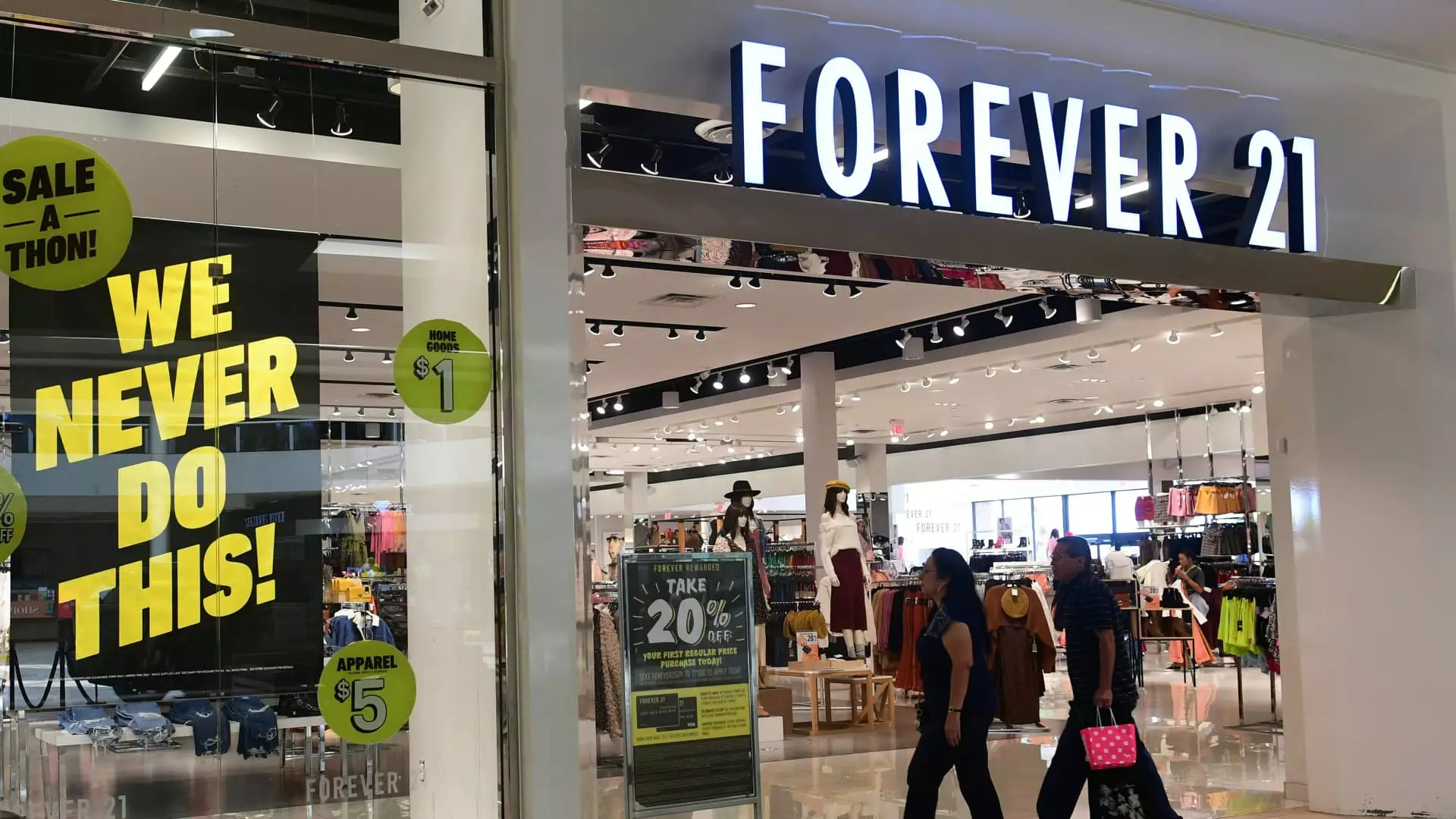Forever 21, once a pioneer in the fast fashion industry, is currently facing a precarious financial situation. Reports suggest that the retailer is engaging in discussions with liquidators, raising concerns about its viability as it contemplates a potential second bankruptcy filing. The company has been desperately trying to secure a buyer for its U.S. leases and assets in an effort to avert what seems to be an impending demise. While Forever 21 announced strategic explorations earlier this year, the recent move to engage with liquidators highlights the gravity of its predicament.
Despite the company’s efforts, the collapse of its business model appears inevitable. The landscape is littered with fierce competition from Chinese e-commerce giants like Shein and Temu. This shift in market dynamics, along with increasing tariffs and an erosion of brand relevance, poses significant challenges for Forever 21. While its intellectual property remains safeguarded by Authentic Brands Group, the operative underpinnings of the corporation signify a troubling trajectory.
Forever 21’s struggles can be starkly attributed to the rapidly evolving fast fashion sector, where emerging players have redefined consumer expectations. Brands like Shein and Temu have mastered the art of agile retailing, employing advanced technology and artificial intelligence to anticipate and respond to consumer demands almost instantaneously. This operational proficiency starkly contrasts with Forever 21’s slower and clumsier inventory management practices, which have increasingly faltered in recent years.
The enduring partnership between Shein and Forever 21, once envisioned as a collaboration, is becoming an unpredictable venture. While Shein has taken a strategic stake in Forever 21’s management group, the prospect of the Chinese giant absorbing Forever 21’s brick-and-mortar presence appears less likely due to its lack of physical retail experience. As e-commerce accelerates at a breakneck pace, the question remains: can Forever 21 adapt and innovate in a landscape that has left it behind?
In recent times, Forever 21’s financial woes have become increasingly apparent. The company’s efforts to renegotiate lease terms and reduce operational costs were merely reactive measures to a deeper structural problem. With the looming threat of liquidation, discussions around potential asset sales have intensified. If Forever 21 cannot secure a viable buyer, the company may need to divert proceeds from asset liquidation towards repaying creditors, though such a move would likely signify defeat in the relentless battle for survival.
The retailer’s first bankruptcy filing in 2019 offered a brief respite, enabling it to reorganize and cut back on unused leases. However, years later, the fundamental hurdles that drove the company into insolvency remain unresolved. As it grapples with mounting financial pressures, the possibility of a second bankruptcy filing looms. This pattern is not unusual; many retailers find themselves in a continuous cycle of restructuring only to face similar issues down the line.
Emerging from the ashes of financial calamity is not unheard of in the retail industry, and there’s a glimmer of hope for Forever 21. If liquidation does occur, Authentic Brands Group, which holds Forever 21’s intellectual property, possesses the capability to rejuvenate the brand in a different format. Successful transitions often require a reevaluation of strategy, blended with innovative approaches that resonate with today’s consumer.
The misalignment between Forever 21’s operational strategy and contemporary market demands emphasizes the importance of adaptability in retail. The impending challenges reflect broader industry transformations, caused in part by advanced e-commerce models capitalizing on shifting consumer habits. Should Forever 21 harness modern trends to reinvent itself, it could emerge as a case study in retail resilience.
The plight of Forever 21 epitomizes the struggles faced by many traditional retailers in a rapidly changing marketplace. With the specter of liquidation casting a long shadow on its prospects, the company stands at a crucial crossroads. It faces an uphill battle in an environment dominated by new-age competitors characterized by speed and efficiency. The outcome of this struggle will not only dictate Forever 21’s fate but also serve as a bellwether of the retail sector’s broader evolution. As brands compete for relevance amidst the turmoil, only time will reveal whether Forever 21 can adapt, evolve, and reclaim its position in the hearts and wallets of consumers.

